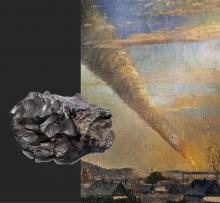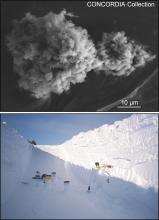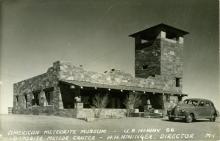Listen to today's episode of StarDate on the web the same day it airs in high-quality streaming audio without any extra ads or announcements. Choose a $8 one-month pass, or listen every day for a year for just $30.
You are here
Tracking Meteors
On any dark night, if you can get away from city lights, you might see a dozen or more meteors blazing across the sky. These streaks of light form when space rocks vaporize as they ram into Earth’s atmosphere at high speed.
Scientists keep a close eye on meteors every night. They’ve set up networks of cameras that track them across the sky. That tells them about the origin of the meteors, and helps them track down bits of rock that fall to Earth as meteorites.
There’s a network in Australia, and several in Europe, for example. And there are several in the United States as well. CAMS, for example, is operated by the SETI Institute. It has 80 cameras just in California, and coordinates with other networks around the world.
Tracking a meteor’s path with different cameras allows scientists to plot its orbit around the Sun. That tells them where the meteor came from. It’s also allowed them to discover many new meteor showers.
A NASA network is designed to help engineers understand the risks that space rocks pose to spacecraft.
And the networks allow scientists to track down possible meteorites. Most of the rocks that hit Earth burn up in the atmosphere or fall into the oceans. But a few hit the ground. Tracking them down gives scientists a more complete picture of them – their origin, their composition, and much more.
The cameras are seeing a lot of action right now, because a meteor shower is under way. More about that tomorrow.
Script by Damond Benningfield





